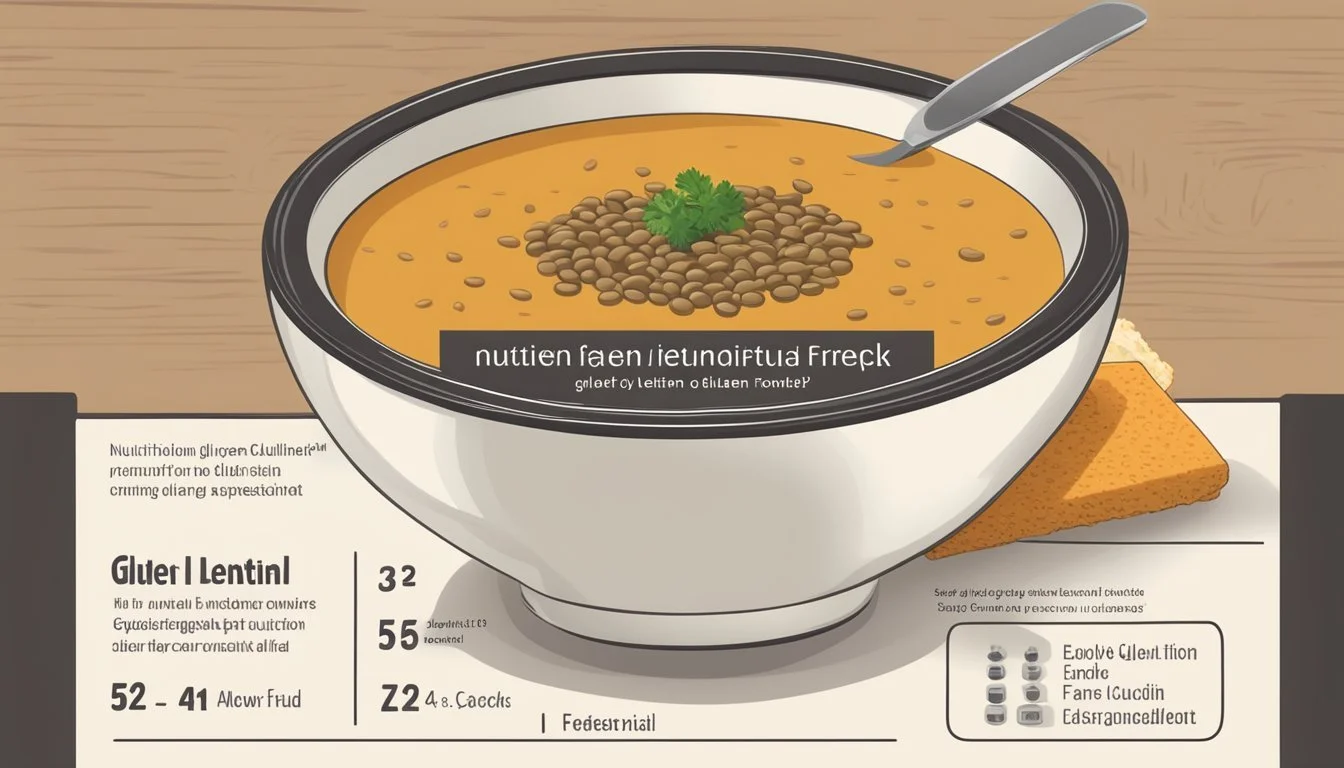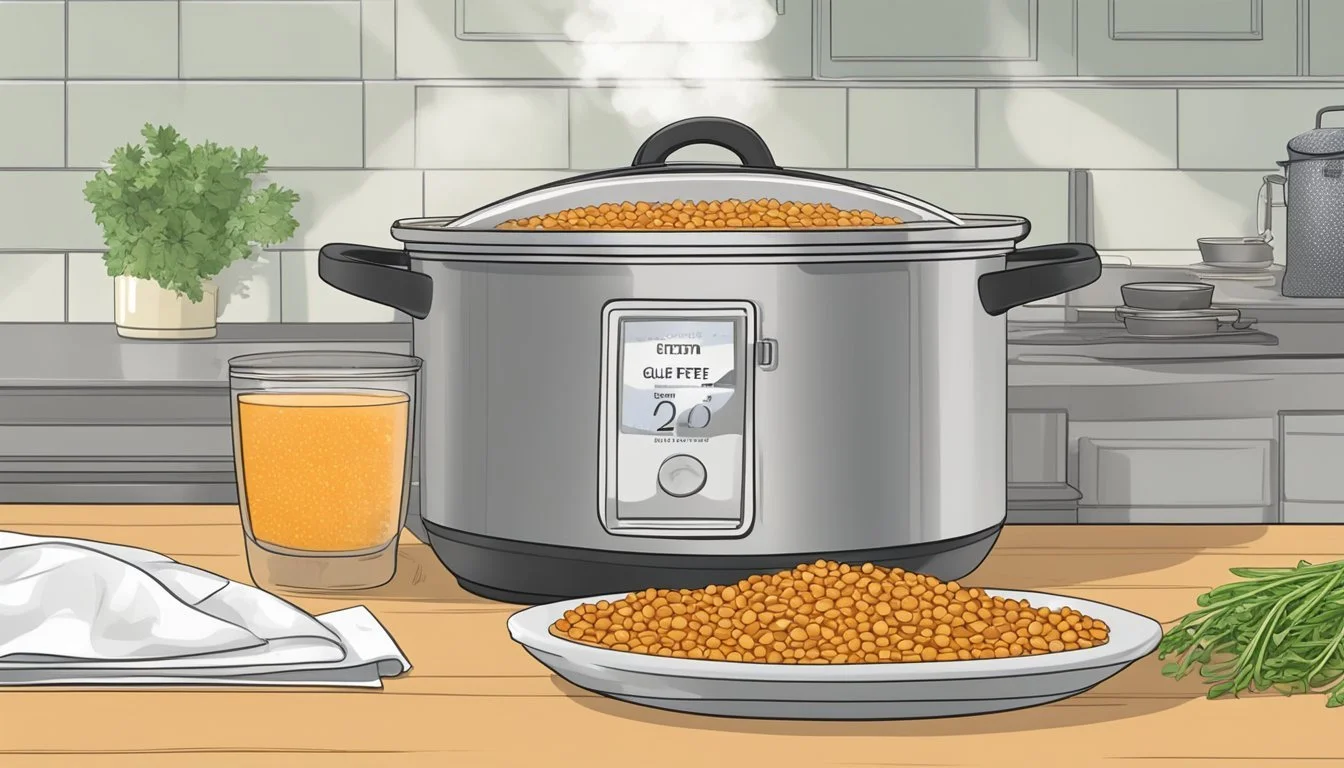How Long Does Gluten-Free Lentil Soup Last?
Best Storage Practices
Making gluten-free lentil soup is a satisfying and health-conscious choice for many. It is not only packed with nutrients but also incredibly versatile. For those wondering about its longevity, gluten-free lentil soup can last for 3-4 days in the refrigerator when stored properly in an airtight container.
If you wish to enjoy the soup beyond this period, freezing is a great option. Lentil soup can be frozen for up to three months, maintaining its flavor and texture. Ensure the soup cools completely before transferring it to a freezer-safe container to preserve its quality.
Whether you are making a hearty lentil and potato soup or a zesty tomato-infused variety, the storage tips remain the same. By following these guidelines, you can keep your gluten-free lentil soup fresh and delicious, ready to savor whenever you need a healthy meal.
Understanding Gluten-Free Lentil Soup
Gluten-free lentil soup offers a nutritious, hearty option for those avoiding gluten. This section highlights key aspects of lentil soup and its health benefits when made gluten-free.
The Basics of Lentil Soup
Lentil soup is a simple yet nourishing dish made primarily with lentils. Lentils are a type of legume rich in protein and fiber, making them an essential component of vegetarian and vegan diets.
When making lentil soup, common ingredients include onions, carrots, celery, garlic, and vegetable broth. Seasoning varies but often includes cumin, curry powder, thyme, salt, and pepper. The soup is typically simmered until the lentils and vegetables are tender, providing a comforting and filling meal.
Benefits of a Gluten-Free Variant
Choosing a gluten-free version of lentil soup has specific health benefits. It is suitable for people with celiac disease or non-celiac gluten sensitivity, ensuring they avoid adverse reactions.
Gluten-free lentil soup maintains the high fiber and protein content of traditional lentil soup, promoting digestive health and prolonged satiety. Additionally, this soup is naturally low in calories and can be made vegan or vegetarian, making it a versatile option for healthy eating.
Selecting Quality Ingredients
High-quality ingredients are crucial for making delicious gluten-free lentil soup. The best lentils, fresh vegetables, and herbs enhance the flavors.
Best Lentils for Soup
Choosing the right type of lentils is essential for the texture and flavor of the soup. Brown lentils are a popular choice as they hold their shape well and offer a robust flavor. Green lentils are also suitable, providing a slightly peppery taste. Red lentils cook faster and break down easily, giving the soup a creamy texture. Look for lentils that are free from debris and have a uniform color to ensure freshness.
Choosing Fresh Vegetables
Fresh vegetables are the backbone of a flavorful lentil soup. Onions, carrots, and celery form the classic mirepoix base, giving a rich depth of flavor. Ensure the vegetables are crisp and free from blemishes. Garlic and tomatoes add complexity and acidity to the soup. For additional texture and nutrition, consider adding potatoes or leafy greens like spinach or kale. Use olive oil for sautéing to enhance the flavors naturally.
Herbs and Spices to Enhance Flavor
Herbs and spices elevate the taste of lentil soup significantly. Italian seasoning provides a balanced blend of herbs like basil, oregano, and rosemary. Fresh herbs such as parsley and thyme add a vibrant flavor. Spices like cumin, coriander, and turmeric introduce warmth and depth. A bay leaf can be added during cooking for a subtle, earthy note. Experiment with different combinations to find the perfect blend that suits your palate.
Preparation and Cooking Techniques
Cooking gluten-free lentil soup can be done using various methods, each offering unique benefits. Options include using the stovetop, a slow cooker, or an Instant Pot.
Cooking on Stovetop
To prepare gluten-free lentil soup on the stovetop, start by heating olive oil in a large pot or Dutch oven over medium heat. Add chopped onions, garlic, and carrots, cooking until they soften. Introduce lentils, diced potatoes, and diced tomatoes (if desired). Pour in vegetable broth and water, bringing the mixture to a boil.
Reduce the heat to let the soup simmer for 30-45 minutes or until lentils and potatoes are tender. Stir occasionally and adjust the seasoning with salt and pepper. For a creamier texture, use an immersion blender to partially blend the soup. Serve hot, garnish with fresh herbs if desired.
Using a Slow Cooker
For a hands-off approach, a slow cooker is an excellent choice. Begin by adding lentils, diced potatoes, chopped carrots, onions, garlic, and seasoning directly into the slow cooker. Pour in the vegetable broth and water.
Set the slow cooker to low heat for 6-8 hours or high heat for 3-4 hours. Ensure all vegetables and lentils are fully submerged in the liquid. Stir occasionally if you are home, but this is not necessary. Once cooked, use an immersion blender to achieve the desired consistency. The slow cooking process develops rich flavors without constant supervision.
Instant Pot Instructions
Using an Instant Pot to make lentil soup speeds up the cooking process. Start by selecting the sauté function and adding olive oil. Sauté the onions, garlic, and carrots for 5-7 minutes until they soften. Add in lentils, diced potatoes, seasoning, and vegetable broth.
Seal the lid and set the Instant Pot to manual high pressure for 15 minutes. Once the cooking cycle is complete, allow the pressure to release naturally for 10 minutes before performing a quick release. For a thicker texture, use an immersion blender to blend a portion of the soup. Serve immediately with a drizzle of olive oil if desired.
Storage Guidelines
Proper storage is essential to maintain the quality and safety of gluten-free lentil soup. Here are some important tips to help you refrigerate and freeze your homemade soup effectively.
Refrigerating Homemade Soup
Once the lentil soup is cooked and has cooled to room temperature, transfer it to airtight containers. It is crucial to store the containers in the fridge at a temperature of 40°F or below.
Typically, gluten-free lentil soup can last for about 3-5 days in the fridge when stored properly. Ensure that the leftovers are covered or sealed tight to prevent contamination and maintain freshness.
Label the containers with the date the soup was made to keep track of its storage duration. Reheat only the amount you plan to consume to avoid reheating multiple times, which can degrade the soup's quality.
Freezing and Thawing
For long-term storage, freezing is an excellent option. Pour the cooled, cooked lentil soup into freezer-safe containers or heavy-duty freezer bags. Leave some headspace in the containers to allow the soup to expand as it freezes.
Gluten-free lentil soup can be stored in the freezer for up to 3 months. Label the containers with the date of freezing. To thaw, transfer the soup from the freezer to the fridge and let it thaw overnight or use the microwave's defrost setting for a quicker option.
Once thawed, reheat the soup on the stovetop or in the microwave until it reaches a safe temperature, stirring occasionally for even heating. Remember, it’s easiest to freeze portions in meal-size servings, making reheating easy and convenient.
Nutritional Information
Gluten-free lentil soup is an excellent option for those seeking a nutritious meal, providing a balanced array of macronutrients and essential vitamins and minerals. It is particularly celebrated for its high fiber and protein content.
Macronutrient Profile
A serving of gluten-free lentil soup typically contains around 104-110 calories. This makes it a low-calorie option well-suited to those watching their calorie intake.
The carbohydrate content is substantial, with around 77% of the calories coming from carbs, which primarily include complex carbohydrates. Lentils are also a potent source of dietary fiber, providing about 8 grams per serving. This fiber helps in maintaining digestive health and can keep you feeling full longer.
Protein is another vital macronutrient found in lentils, with a single serving providing approximately 6 grams. This makes it an excellent protein source for vegetarians and vegans. The soup generally contains negligible amounts of fat, often close to 0 grams per serving, making it heart-healthy.
Vitamins and Mineral Content
Lentil soup is nutrient-rich, providing various important vitamins and minerals. It is especially high in iron, which is crucial for preventing anemia and maintaining energy levels. Each serving can offer a significant portion of your daily iron needs.
The soup is also rich in potassium, an essential mineral that aids in regulating blood pressure and fluid balance in the body.
Folate, or vitamin B9, is abundantly present in lentils. This vitamin is vital for brain function and plays an important role in mental and emotional health.
In addition to these, gluten-free lentil soup typically contains essential vitamins and minerals like vitamin C, which boosts the immune system, and minor amounts of sodium, which varies depending on the recipe and added ingredients.
Overall, gluten-free lentil soup stands out as a nutritious, filling meal packed with beneficial nutrients.
Serving and Pairings
Gluten-free lentil soup is versatile and can be served with a variety of accompaniments to make a hearty and delicious meal. Adjusting the serving size according to the occasion or dietary needs is also essential for an enjoyable dining experience.
Ideal Accompaniments
Pair gluten-free lentil soup with crusty bread or gluten-free crackers for a satisfying meal. The crunchiness of the bread adds a delightful texture contrast to the creamy soup. A fresh salad with mixed greens, tomatoes, and a light vinaigrette enhances the flavors and adds a refreshing element.
For a vegan option, consider serving the soup with a side of roasted vegetables or a grain salad with quinoa and herbs. These options complement the soup's hearty nature and add more nutritional value to the meal, making it perfect for a cozy weeknight dinner. Additionally, serving it with a small bowl of rice or cauliflower rice can provide a complete and filling dish.
Adjusting Serving Size
When planning to serve gluten-free lentil soup, consider the serving size based on the meal's context. For a main course, a generous bowl (about 1-2 cups) of soup per person is ideal, especially when paired with substantial sides like bread and salad. This ensures that each guest feels full and satisfied.
For an appetizer or side dish, reduce the portion to half a cup or smaller bowls. Smaller servings allow the soup to play a supporting role without overwhelming the meal. Adjust the quantity of ingredients if preparing the soup for a larger group, ensuring the flavors and textures remain consistent. This flexibility makes gluten-free lentil soup a versatile choice for various dining occasions.
Recipe Variations and Tips
To create a gluten-free lentil soup that's both delicious and nutritious, consider customizing the flavor and texture and exploring alternative ingredient options.
Customizing Flavor and Texture
Adjusting the flavor and texture can transform your lentil soup. Spices and herbs like curry powder, cumin, coriander, and Italian seasoning can add depth and warmth. Fresh herbs such as parsley, cilantro, or basil provide a fresh note at the end.
For a creamier texture, reserve a portion of the cooked soup and blend it before adding it back in. This method offers a rich, velvety consistency without the need for cream. Diced or crushed tomatoes can also enhance both texture and taste.
For added texture, consider incorporating vegetables like spinach or kale. These greens not only boost nutritional value but also add color and a slight crunch. It's important to note that overcooking might cause these greens to lose their vibrant color and texture.
Quick-serving tip: Garnish with a drizzle of olive oil or a squeeze of lemon for a fresh finish.
Alternative Ingredient Options
The flexibility of lentil soup allows for numerous modifications to accommodate different dietary needs and preferences. For vegans and vegetarians, using vegetable broth is essential. Adding grains such as rice or barley can make the soup heartier and more filling.
Swap ingredients to suit your taste or availability. Instead of brown lentils, try red lentils for a quicker cooking time and a different texture. Potatoes are a great addition for extra heartiness, while carrots and celery add sweetness and crunch.
Consider using coconut milk for a creamy, exotic twist or adding diced or crushed tomatoes for a tangy flavor. For those looking to cut down on cooking time, canned lentils can be a quick and easy substitute, though they may slightly alter the texture.
By experimenting with these variations and tips, you can create a unique, flavorful, and satisfying gluten-free lentil soup tailored to your personal preferences.
Health Considerations
When consuming gluten-free lentil soup, it is important to consider dietary restrictions and allergies to ensure that it meets one's health needs. Specific ingredients and practices may affect the overall suitability of the dish for various diets.
Dietary Restrictions and Allergies
Gluten-free lentil soup can suit numerous dietary restrictions, including vegan, vegetarian, and those avoiding gluten. Standard recipes typically use vegetable broth, lentils, and kosher salt, making them appropriate for many individuals.
For a keto-friendly diet, it's vital to check carb counts of added vegetables. Some versions might be high in carbs, impacting ketosis. Always review ingredient labels to avoid gluten contamination, especially from broths or seasonings like malt vinegar.
People with allergies should be cautious about cross-contamination or unexpected ingredients, such as certain types of sea salt that might contain trace minerals. Use airtight containers to store soup properly, as this preserves freshness and reduces the risk of spoilage.










